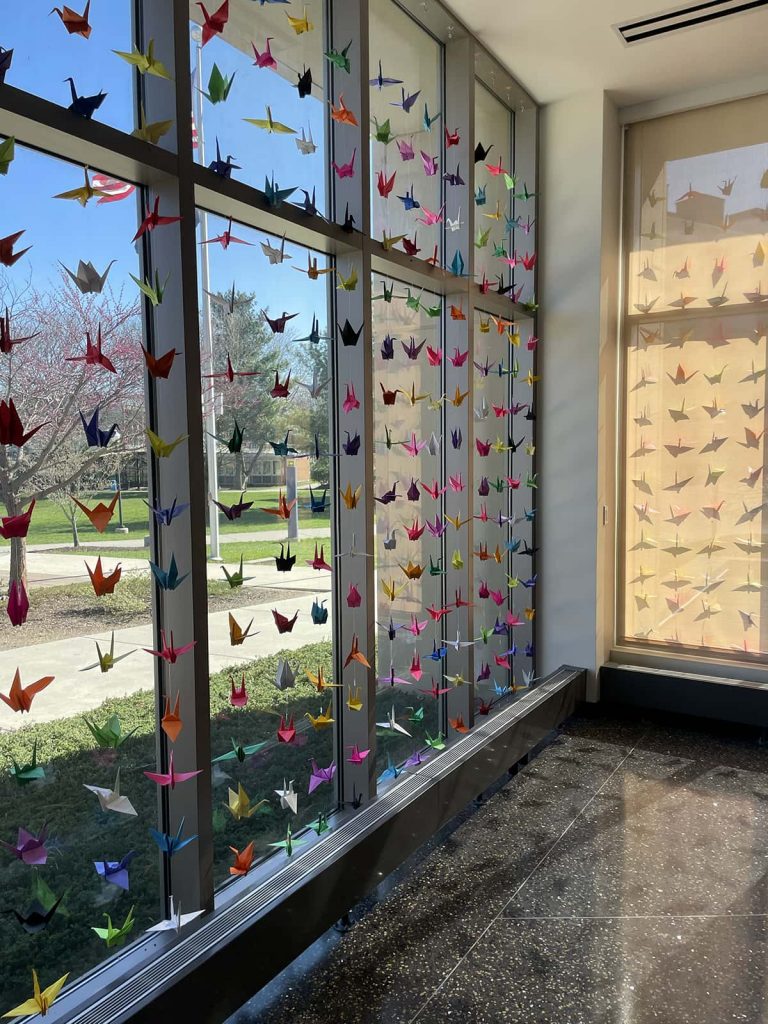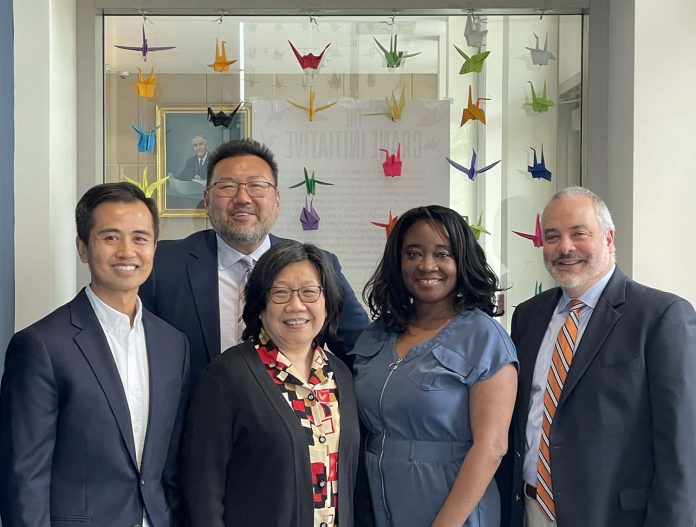Across the country, hate crimes against members of the AAPI (Asian American and Pacific Islander) community have escalated over the past couple of years, leaving many Americans shocked and disturbed but unsure of how to respond. On campus, a movement to foster inclusion and respect for the many communities that feel marginalized or unseen took root and has been growing. The AAPI Community Committee and the Crane Initiative it created have begun to nurture a new kind of community within the larger university culture.
Saddened by the violence and hate crimes against AAPI individuals, Dian Brown-Albert, director of Multicultural Affairs, wanted to help make the AAPI campus community more visible, and for members of the Southern community to learn about the experiences and needs of the AAPI community.
To take action, Brown-Albert reached out to AAPI and non-AAPI faculty, staff, and students to form the AAPI Community Committee. Together, this committee and Multicultural Affairs were able last year to put together the first AAPI Heritage Week of events in honor of AAPI Month, which is observed in May. The events addressed micro-aggressions, queer identity within the Asian American community, and historical aspects of Asian American culture and migration.
According to Art Professor Thuan Vu, a member of the AAPI Community Committee, while the committee initially came together in reaction to the national hate crimes against the AAPI community, it has become much more than that. “The committee has become a way to connect, celebrate, and share the message of inclusion and respect,” Vu says. “We celebrate our diversity and want our environment — where we learn, teach, and work — to reflect and reward our unique perspectives.”
One of our biggest projects the committee undertook this year was the Crane Initiative, the product of which is now installed in front of Buley Library. The initiative involves bringing people together to make paper cranes, using the Japanese paper-folding art of origami. The Crane Initiative poster describes the project as:
“…an extension of our efforts to raise awareness and to celebrate our country’s diversity. Using the Japanese tradition of origami, we are engaging the faculty, staff, and students of Southern to fold cranes to represent the victims of AAPI hate crimes. Cranes, as migratory animals, cross geographical boundaries and peacefully co-exists in any environment. By folding the cranes in all different colors, we make a broader metaphor for our collective diversity, making the point that people of all colors, faiths, abilities, sexual, and gender orientation deserve to feel safe, included, and seen. By placing them together, the installation will point to our greater strength when our collective diversity—containing the unique traditions, experiences, and histories—is harnessed and celebrated.”

Yi-Chun Tricia Lin, director and professor of Women’s and Gender Studies and a member of the AAPI Community Committee, explains that while folding paper cranes is a very ancient art/tradition, the folding 1,000 paper cranes for peace is attributed to Sadako Sasaki, a victim of the Hiroshima atomic bombing who passed away at age 12 in 1955. When Sadako was in the hospital receiving treatment for leukemia, she was given origami cranes, which were believed to help sick people become well. Her father told her the Japanese legend of the crane, which says that a crane can live for a thousand years, and anyone who folds one crane for each year of a crane’s life may make a wish and have it granted. In hopes of being well again, Sadako was inspired to fold 1,000 cranes. Though her wish did not come true, she inspired others to create a monument for children who died as a result of the atomic bombings in Japan; the monument is a statue of Sadako lifting a large paper crane above her head.
Vu says that the campus initiative has been a wonderful success in that it has brought many campus constituencies together: over 300 students and 50 faculty, staff, and administrators have helped to make the cranes; over 1500 hours have been spent on the project; and throughout this period of creation, time was spent with one another to share in our message that celebrates inclusion and diversity. And, Vu adds, the project will continue into next year.
Computer Science Professor Winnie Yu, who is also a member of the committee, agrees that the Crane Initiative has “taken flight,” like the cranes the folded paper represents.
“Very often, we’re all so busy, in our own silos and bubbles. We don’t know what we’re missing,” Yu says. With the Crane Initiative, “we find we’re among friends – there’s a community spirit” when you work on a shared project with others.
“We are folding for peace,” she adds.
Vu explains, “Initially, the committee was taught by Shuei Kozu [assistant professor of social work] on how to make [the cranes]. Once we learned, we were able to hold Crane Parties where we taught students, faculty, staff, and other members of the community. To do this, we taught in person and using YouTube clips. This act of sharing and making was the real heart of the project in that we gathered together to make something that sends out a positive message that affirms all of us, no matter our race, gender, sexual orientation or identification, our ability level, or our socio-economic background. Spending all this time making the cranes and creating the installation really bonded us and helped to create a true community here at Southern.”
Brown-Albert adds that making the cranes was fun and made her feel a part of something larger than herself. “Learning to make origami cranes with my colleague, and the students was awesome! I met many faculty, staff, and students who I’ve never met before, folks stepped out of their comfort zones and connected with each other. It was not only fun but the reason why the campus community came together was reinforced. They made origami cranes to stand against Asian-American hate crimes and ALL acts of aggression that divide us. It warmed my heart to see our campus community re-enforce our commitment to respect, inclusion, and diversity.”
President Joe Bertolino and CSCU President Terrence Cheng have both visited the crane installation in Buley and are fully supportive of the project. Vu says that when Cheng visited, “we were able to share what we feel is a singular committee within the CSU System and what we have been doing.”
The plan to keep the crane project going into next year is still taking shape. Brown-Albert explains, “Here at SCSU, our celebration of AAPI month begins during the month of April before the departure of students and many members of the campus over the summer break. In April, the AAPI Committee; the Multicultural Center; Division of Diversity, Equity and Inclusion; and the Asian Student Association host a variety of events that highlight the many cultures and traditions within the AAPI community, and we honor the legacy of those who paved the way. Next year AAPI Heritage Month will be honored during the entire month of April.”
Yu sees the crane project as a way to make the university’s social justice mission experiential. “We’re educating tomorrow’s leaders,” She says. “The social justice mission at Southern is very on point. What can we do to improve our community right here, in our own classrooms?”
Vu invites anyone interested in participating in the Crane Initiative to join in. “Please come pick up origami folding paper from the Multicultural Center and make some cranes,” he says. “You can drop them off there as well.”
Here is a link on how to make cranes:


